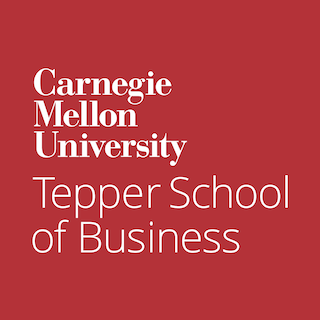Join me as I talk to John Hooker and Peter Zhang, who along with Özgün Elçi (Ph.D. 2022), are co-authors of The Structure of Fair Solutions: Achieving Fairness in an Optimization Model (Springer, 2025). We discuss how the book mathematically defines and achieves fairness within optimization models that underpin critical business and public policy decisions. Recognizing the multitude of proposed fairness models, this introductory volume argues that fairness must be treated as a foundational principle when designing and using optimization models.
The Tension Between Efficiency and Fairness
Optimization models are a mathematical approach to decision-making that identifies the best option or solution to a problem from a set of all possible choices, considering constraints and objectives. Optimization models tend to focus on maximizing benefit or minimizing cost. This sounds reasonable until you realize how easily such goals can come at the expense of the vulnerable. A model that allocates organ transplants to maximize life-years saved might ignore patients with rare or complex conditions. A traffic system designed for throughput can condemn drivers on less-traveled roads to endless delays. Artificial intelligence (AI) trained to optimize loan repayment may deny mortgages to entire communities. In these cases, the models are not broken. They are working as designed, to be efficient, but not fair.
One of the book’s central concepts is acknowledging the inherent tension between efficiency and fairness. Designers often create optimization models to maximize some objective function, be it profit, social welfare, or resource utilization. Introducing fairness can necessitate a departure from purely efficiency-driven outcomes. Elçi, Hooker, and Zhang navigate this by primarily focusing on fairness criteria that explicitly integrate efficiency concerns. They argue that in most real-world scenarios, a reasonably efficient and demonstrably fair solution is preferable to one that achieves peak efficiency at the cost of significant inequity.
This is why fairness cannot be a secondary concern. It must shape the very objectives of optimization. The authors of this book make that point by rejecting the idea that fairness can be layered onto models after the fact. Instead, they propose a new approach: evaluate fairness by examining the structure of the solutions that different fairness models produce. In other words, judge the model not by its assumptions, but by its consequences.
Different Fairness Models and Their Impacts
The authors review a spectrum of fairness models: utilitarian, maximin, leximax, alpha fairness, beta fairness, and bargaining-based approaches. They assess them based on the structure of the solutions they yield. Do these solutions incentivize cooperation or pit stakeholders against each other? Do they work across different layers of decision-making, such as national and regional levels? Do they reward efficiency in a way that benefits everyone or just a few?
The book’s strengths are its rigorous mathematical treatment and accessibility to a diverse audience. While the core of the work is grounded in optimization theory and mathematical proofs, the authors provide intuitive explanations and illustrative examples. The concluding chapter is an overview of the key findings, offering a valuable entry point for practitioners seeking a high-level understanding of the implications of different fairness models. Optimization modelers will appreciate the inclusion of linear and integer programming formulations, providing concrete tools for incorporating fairness considerations into their work. Furthermore, the book’s exploration of proof techniques offers a valuable resource for fairness researchers looking to extend the existing body of knowledge.
The Broader Implications of Fair Optimization
By examining how different fairness criteria affect the incentives of individual stakeholders and the potential for implicit transfers between them, the authors provide a deeper understanding of the economic consequences of pursuing fairness in optimization. This interdisciplinary approach enriches the analysis and broadens the book’s appeal.
The Structure of Fair Solutions is a thoughtful exploration of the values that underpin our decision-making processes. By providing a rigorous framework for understanding the implications of different fairness models, the authors empower us to make more informed and ethically sound choices in a world increasingly shaped by algorithmic decision-making. The book serves as a reminder that while optimization models can provide powerful tools for efficiency, finding a truly optimal solution must also consider the fundamental principles of fairness and equity. It is a valuable contribution to the literature, one that will undoubtedly shape future research and practice in the field of fair allocation.
The Structure of Fair Solutions: Achieving Fairness in an Optimization Model is available from Springer Nature as part of their Synthesis Collection of Technology.






